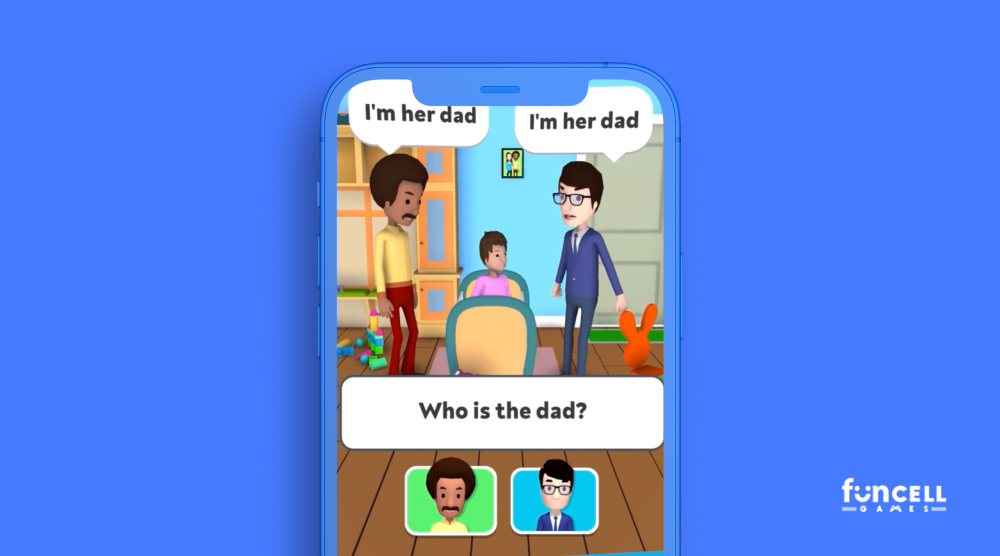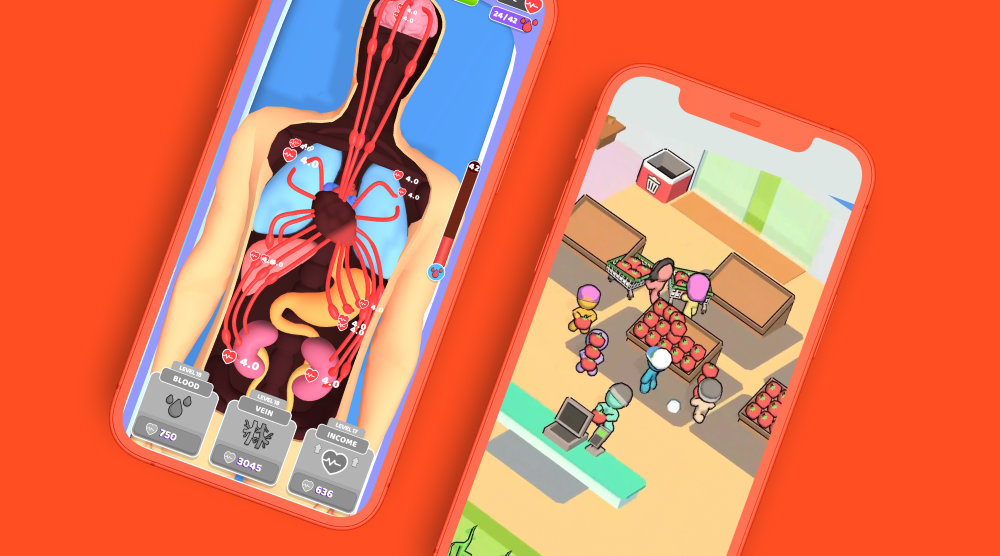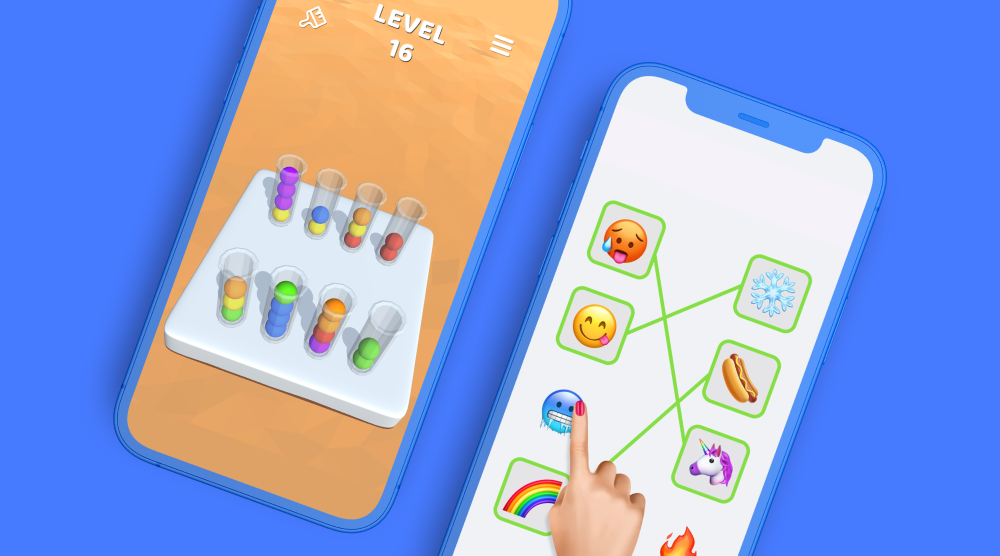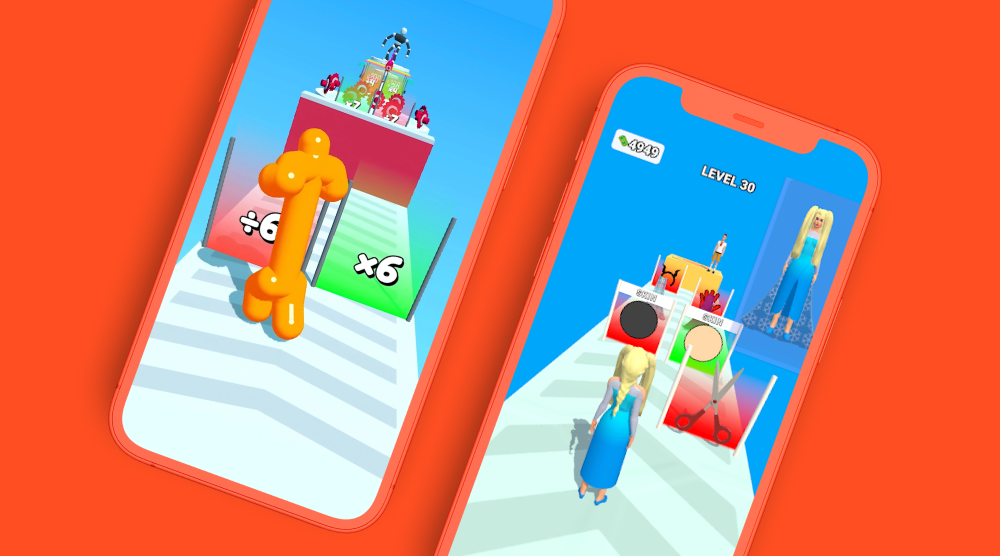Our Developer Spotlight series highlights top hyper-casual game developers sharing their tips for success - on everything from ideation to game design. To kick off this series, we sat down with Abhishek (AB) Malpani, the Founder of Funcell Games, the mobile game studio behind major hits, like Stairway to Heaven, Idle World, and Doglife Simulator.

With their recent hit Perfect Lie that reached #2 on Android with Supersonic, and a portfolio of games that achieved hundreds of millions of downloads, AB and the Funcell Team have proven their ability to keep coming up with great game ideas. Here, he shares his top tips for coming up with new hyper-casual game concepts and maximizing efficiency during prototyping for studios of all sizes.
Getting inspired by the past, paid, and other platforms
There are very few game ideas that come entirely out of nowhere - they’re often inspired by something else, whether that’s another game or an object in real life. Even the Wright brothers got the inspiration for the airplane from seeing how birds fly.
We often get our inspiration at Funcell from three different places:
- The past - looking at mobile games from 2010-2018
- Paid - browsing the top paid games
- Other platforms - exploring games uploaded by other developers onto websites like Reddit and itch.io
Let me dive into each one further.
Throw it back to 2010-2018
The time period of 2010-2018 had many examples of polished and engaging games that can inspire current hyper-casual titles. This was an era before the rise of hyper-casual - and many of these games have great themes and concepts that can be adapted for a hyper-casual audience now.
For example, the numbers puzzle game 2048 was launched in 2014 and was an immediate success. We believed the concept had potential as a hyper-casual game, so we took inspiration from the theme and designed it for hyper-casual players with a simpler mechanic and snackable gameplay.
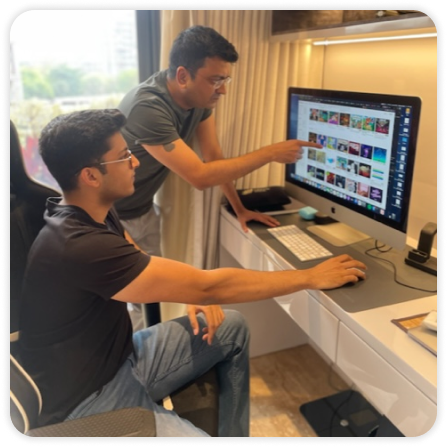
Looking at mobile games from an earlier time can inspire hyper-casual hits of today - just make sure you’re adapting them for a hyper-casual audience by making the mechanic simple and the content digestible.
Tap into the loyalty of paid users
Revenue from paid games is only 4% of overall mobile gaming revenue - so there are fewer users installing these games, but they’re highly motivated to do so.
"The games that reach the top paid charts are doing something right to attract such a loyal following."
- Abhishek Malpani, Founder of Funcell Games
Clearly, the games that reach the top paid charts are doing something right to attract such a loyal following. That’s why we browse these game charts and pull out any concepts we think could be made into free-to-play hyper-casual hits.
Explore games on other platforms
Many developers upload a rough prototype of their game to sites like Reddit and itch.io to get early player feedback or just share their idea for users to enjoy. Often, these are PC or web-based games - but they can still inspire hyper-casual ideas. I usually spend a few hours each week browsing these sites for ideas - and encourage my team to do so, too.
Our hit Stairway to Heaven was inspired by a game we saw on itch.io. We took the concept and turned it into an addicting hyper-casual decision-making game that went on to achieve over 40 million installs.
"Stairway to Heaven was inspired by a game we saw on itch.io then turned into a hyper-casual decision-making game that achieved over 40 million installs."
- Abhishek Malpani, Founder of Funcell Games
Expanding to new platforms beyond mobile for inspiration can help you discover unique ideas that can scale with a hyper-casual audience.
Prototype affordably as a solo developer
I now work with a team of almost 100 people, but I began my career in game development with a much smaller group. So I know what it’s like to ideate and prototype with fewer resources than a larger, established organization.
Keep scalability top of mind
When I was starting out, I couldn’t run unlimited prototype tests because it would rack up the costs. I needed to consider the games that could be the most marketable and scalable. My advice for solo and indie developers working with limited financing is to consider the scalability of an idea.
You may find hundreds of great concepts - but not all good ideas can grow into profitable hyper-casual games. Keep in mind progression and how you’ll build out enough content to retain users and encourage higher playtime.
"Consider the scalability of an idea by keeping in mind progression and how you'll build out plenty of content."
- Abhishek Malpani, Founder of Funcell Games
This is true for developers of all sizes, but it really needs to be top of mind for smaller teams, so you don’t waste your budget on running tests for games that will be too difficult to scale.
Use templates
Additionally, I suggest looking for resources and templates that can help you prototype more quickly and affordably - and fill any knowledge gaps.
When I first began developing games, I was very skilled at coding but had less experience in UI and design. Using assets like those available on Unity let me build polished prototypes efficiently without the need for a lot of design experience. As I grew my skills - and my team - I still use these assets and design templates because they make the prototyping process much quicker and easier. Working with a publisher also helps fill these knowledge and resource gaps.
Dividing and conquering as a large team
Now that I’ve grown my team, the challenge is maximizing efficiency by directing resources to the right parts of the operation and making sure all team members are productive.
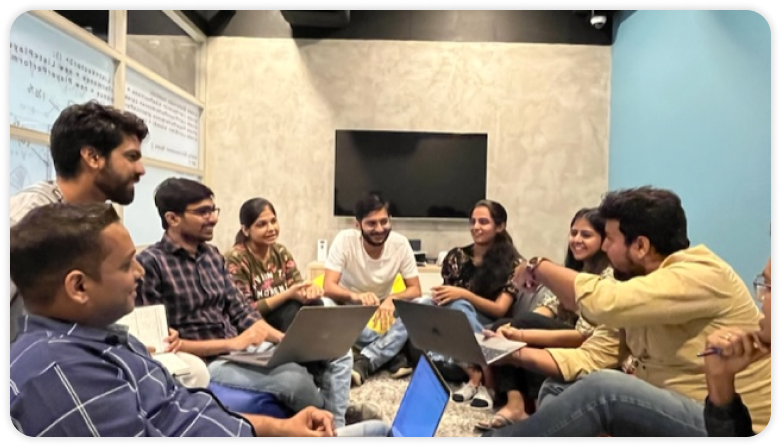
Stay flexible
In Funcell, we have teams for each mobile genre - but every team member is flexible and skilled in developing other genres. For example, if we see that puzzle games are climbing the charts, we’ll put more resources and team members on prototyping and building games in that genre.
Since we’re developing games across genres, it’s a big advantage to stay flexible and make sure teams can design many types of games. This also helps bring in new perspectives to hyper-casual ideation. Someone can identify a theme, mechanic, or control from another genre that worked well and can inspire a hyper-casual hit.
In fact, we were recently inspired to turn a casual puzzle game about sorting test tubes into a hyper-casual title. We kept the theme, simplified gameplay, and added a mini game about stitching clothes to give it a hyper-casual twist.
Check in with regular meetings
Keeping track of all the teams and games under development can be a challenge - which is why we hold daily meetings. We first check in with team leaders and then schedule additional calls based on the games that are showing high potential.
"By understanding which games show potential, we can direct more resources and improve the speed and efficiency of building them out."
- Abhishek Malpani, Founder of Funcell Games
This is important for the prototyping stage because by understanding which games show potential, we can direct more resources and improve the speed and efficiency of building them out. Especially in hyper-casual, speed matters to get ahead of competitors before they launch clones.
What we’re working on now
We’re seeing a shift in the hyper-casual market towards games with higher CPI - and in turn, higher LTV. So we’re starting to build games that have greater depth and complexity to keep users playing for longer.
Right now, this looks like mixing genres. We’re working on a hyper-casual game, for example, that combines elements from a:
- Home design puzzle game
- Decision-making narrative
- Construction idle game
I don’t think we as developers should restrict ourselves with genres - we should make what people love to play. Trying out a mix of genres and testing which combinations engage users is the key to a hit hyper-casual game with good later-day metrics and high LTV.
Let's put these tips to good use
Publish your game with Supersonic
